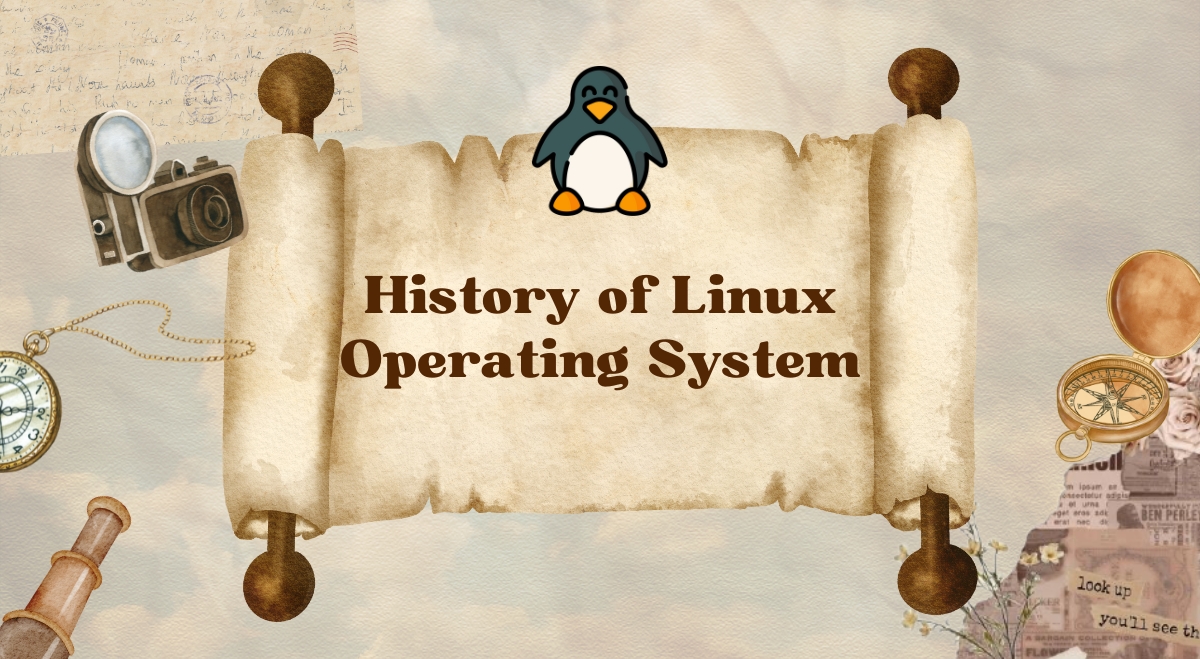Linux has come a long way since its creation in 1991. What started as a personal project by a young university student has grown into the world’s most popular operating system, powering everything from smartphones to supercomputers. Let’s take a journey through the fascinating history of Linux and see how it evolved over the past three decades.
History of Linux Operating System
Our story begins in 1991 when Linus Torvalds, a 21-year-old computer science student at the University of Helsinki in Finland, started working on a new operating system kernel as a personal project. Torvalds wanted to create a free and open-source alternative to Unix, the dominant operating system at the time. On August 25, 1991, Torvalds posted the following message to the comp.os.minix newsgroup:
Hello everybody out there using minix -I’m doing a (free) operating system (just a hobby, won’t be big and professional like gnu) for 386(486) AT clones. This has been brewing since april, and is starting to get ready. I’d like any feedback on things people like/dislike in minix, as my OS resembles it somewhat (same physical layout of the file-system (due to practical reasons) among other things).
Torvalds initially called his operating system “Freax” (a combination of “free”, “freak”, and “x” to indicate it was a Unix-like system). However, the administrator of the FTP server where the kernel was hosted renamed it to “Linux”.
The GNU Connection
While Torvalds was developing the Linux kernel, Richard Stallman and the GNU Project had been working on creating a complete Unix-like operating system since 1983. The GNU Project had created many of the tools and utilities needed for a functional OS, but their kernel (called GNU Hurd) was far from complete. This is where Linux came in. Torvalds’ kernel was combined with the GNU tools to create a fully functional and free operating system. This is why some people argue that Linux should more properly be called “GNU/Linux”.In 1992, Torvalds released version 0.12 of the Linux kernel under the GNU General Public License (GPL), cementing the marriage between Linux and the GNU Project.
The Rise of Linux Distributions
As Linux grew in popularity, different organizations and communities began packaging the Linux kernel with various GNU tools, applications, and UI components to create complete “distributions” that were easier for average users to install and use. Some of the earliest Linux distributions included:
- Softlanding Linux System (SLS) in 1992
- Slackware and Debian in 1993
- Red Hat Linux (later split into Fedora and RHEL) in 1995
- SUSE Linux in 1996
These distributions greatly expanded the appeal and accessibility of Linux to a wider user base beyond just programmers and Unix enthusiasts. They provided easier installation, configuration management, software updates, and graphical user interfaces.
Gaining Momentum in the Late 90s
By the late 1990s, Linux was gaining serious traction, especially in the server market. Some key events:
- In 1996, Linux was considered stable and reliable enough to support the launch of the now-dominant Apache web server.
- In 1998, Oracle and Informix ported their popular databases to Linux.
- In 1999, Dell, IBM, Compaq and Hewlett-Packard all announced plans to support Linux on their systems.
- In 1999, Red Hat became the first Linux company to launch a successful IPO.
The stage was set for Linux to start seriously challenging the dominance of proprietary Unix and Windows NT in the enterprise server market. With no licensing fees, excellent stability and security, and support from major vendors, Linux became an attractive choice.
The 2000s: World Domination
In the 2000s, Linux expanded its reach into nearly every corner of computing:
- Supercomputers: As of 2017, every single one of the world’s top 500 supercomputers runs Linux.
- Servers: As of 2017, Linux is used on over 50% of web servers.
- Embedded Devices: Linux powers an enormous number of embedded systems, from routers to TVs to medical devices.
- Mobile: Google’s Linux-based Android OS, launched in 2008, powers over 70% of the world’s smartphones.
- Desktop: While still a small player compared to Windows and macOS, desktop Linux distributions like Ubuntu and Mint have millions of users worldwide.
The Modern Era
Today, Linux is everywhere. Virtually every major technology company uses and contributes to Linux in some way. Massive open-source projects like Kubernetes and OpenStack are built on Linux. Developers rely on Linux for everything from artificial intelligence to blockchain and new Linux distributions like Elementary OS and Solus are pushing the boundaries of the desktop experience.
It’s incredible to think that what started as one man’s hobby project now pretty much runs the world. The success of Linux is a testament to the power of open-source software, community-driven development, and the vision of pioneers like Linus Torvalds and Richard Stallman. From humble beginnings to global dominance, Linux has had an amazing journey over the past 30 years. And with passionate developers and users all over the world, its future looks brighter than ever.
The little operating system that could have become the operating system that has – and will continue to shape the course of computing history.

